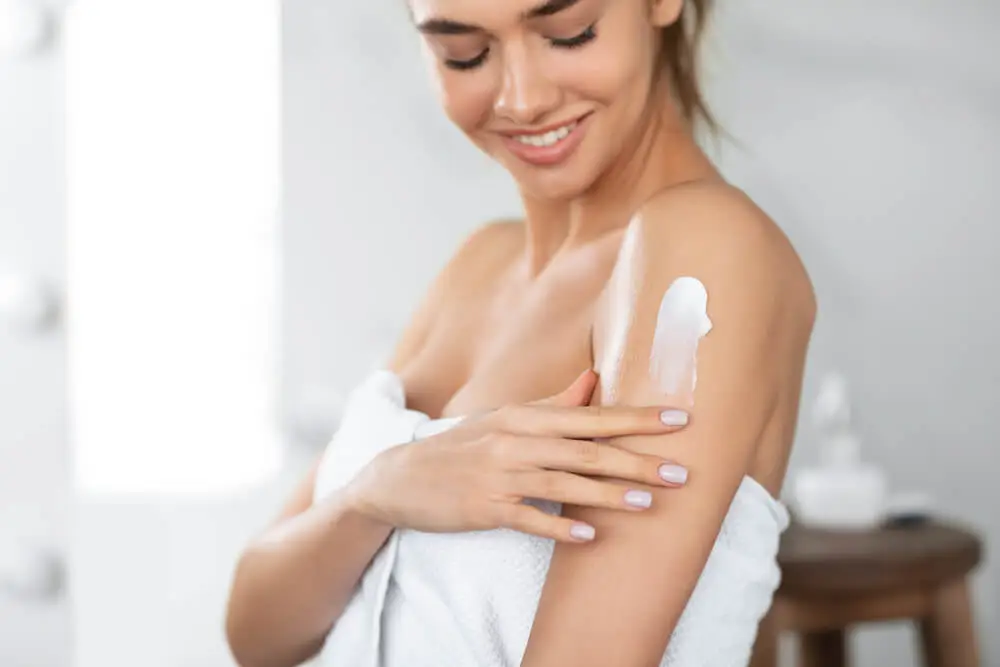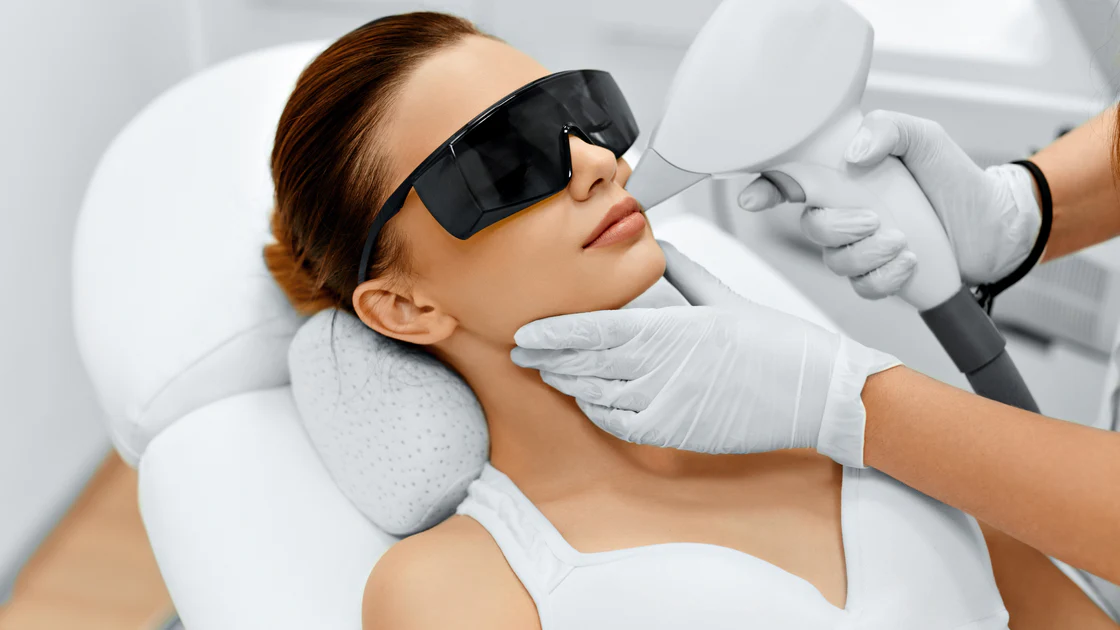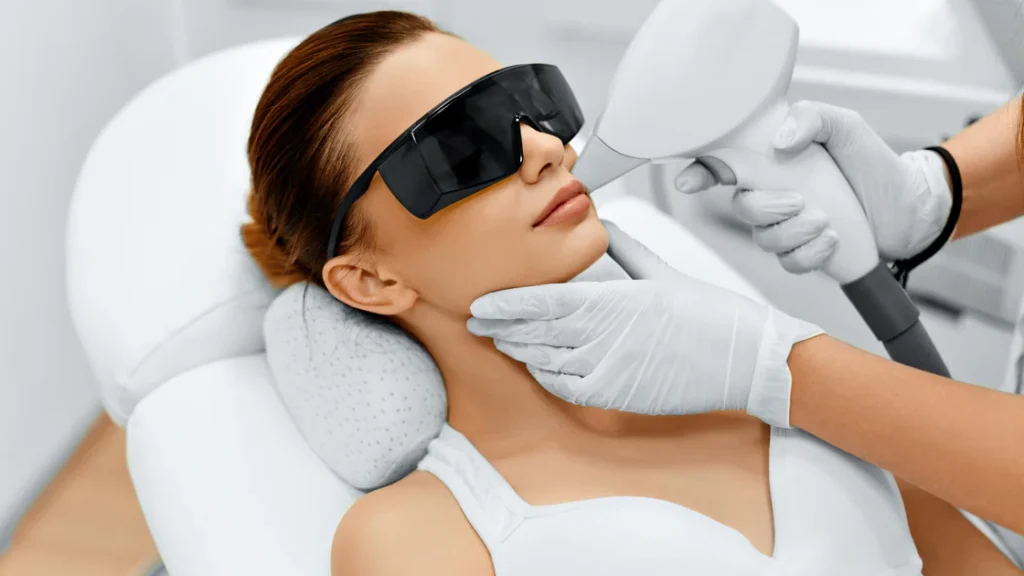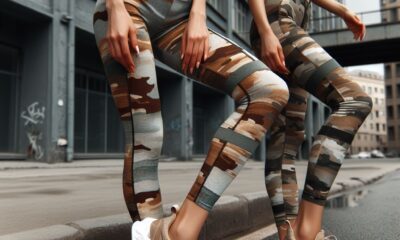Skin Care and Beauty Tips
Moisturizing Conditioner for Curly Hair: Unlocking the Secret to Bouncy, Hydrated Curls
Curly hair is stunning, but it comes with its own set of challenges, chief among them being moisture retention. Unlike straight hair, curly hair tends to be drier due to its structure, which makes it prone to frizz and breakage. However, with the right care and products, you can unleash the full potential of your curls. Enter moisturizing conditioner – the unsung hero in every curly-haired individual’s hair care routine.

Understanding Curly Hair and the Need for Moisture
Before delving into the world of moisturizing conditioners, it’s crucial to understand curly hair. Unlike straight hair, which has a smooth surface, curly hair is characterized by twists, turns, and bends along the hair shaft. This unique structure makes it difficult for natural oils produced by the scalp to travel down the length of the hair, resulting in dryness and brittleness.
What Exactly is Moisturizing Conditioner?
Moisturizing conditioner is specifically formulated to replenish and retain moisture in the hair. Unlike regular conditioners, which primarily focus on detangling and smoothing the hair cuticle, moisturizing conditioners contain ingredients that penetrate the hair shaft to provide deep hydration. Look for ingredients like shea butter, coconut oil, and glycerin, which are known for their moisturizing properties.
Benefits Galore: Why Moisturizing Conditioners are a Curl’s Best Friend
The benefits of using a moisturizing conditioner for curly hair are manifold. Firstly, it provides much-needed hydration, leaving your curls soft, supple, and easier to manage. Additionally, it helps define your natural curl pattern, reducing frizz and enhancing bounce. Moreover, regular use of moisturizing conditioner can prevent breakage and split ends, promoting overall hair health.
Choosing the Right Moisturizing Conditioner: What to Look For (2024)
When selecting a moisturizing conditioner for your curls, it’s essential to consider your hair type and porosity. Fine curls may require a lighter formula to prevent weighing down, while thicker curls may benefit from a richer, more nourishing conditioner. Furthermore, avoid products containing sulfates, parabens, and silicones, as these can strip the hair of moisture and cause buildup.
Pro Tips for Optimal Moisturizing Conditioner Application
To maximize the benefits of your moisturizing conditioner, it’s important to use it correctly. Start by shampooing your hair to remove any buildup, then apply the conditioner generously from root to tip. Use a wide-tooth comb to distribute the product evenly and leave it on for a few minutes before rinsing thoroughly with lukewarm water. For an extra hydration boost, try incorporating a weekly deep conditioning treatment into your routine.
DIY Moisturizing Conditioner Recipes: Harnessing the Power of Nature
If you prefer a more natural approach to hair care, why not try making your own moisturizing conditioner at home? Ingredients like avocado, honey, and olive oil are not only moisturizing but also readily available and budget-friendly. Mix and match according to your hair’s needs, and enjoy the satisfaction of knowing exactly what goes into your hair products.
Top Picks: The Best Moisturizing Conditioners for Curly Hair
With a plethora of options available on the market, finding the perfect moisturizing conditioner can be overwhelming. To help you narrow down your choices, here are some top-rated products beloved by curly-haired individuals worldwide:
- SheaMoisture Coconut & Hibiscus Curl & Shine Conditioner
- Cantu Shea Butter for Natural Hair Hydrating Cream Conditioner
- Ouidad Curl Quencher Moisturizing Conditioner
- As I Am Coconut CoWash Cleansing Conditioner
- Devacurl One Condition Original Daily Cream Conditioner
Common Pitfalls: Mistakes to Avoid When Using Moisturizing Conditioner
While moisturizing conditioners can work wonders for your curls, there are some common mistakes to steer clear of. Avoid overloading your hair with product, as this can weigh it down and leave it feeling greasy. Additionally, don’t skip conditioner altogether, as this can lead to dryness and increased frizz. Strike a balance and adjust your usage according to your hair’s needs.
Crafting the Perfect Curly Hair Maintenance Routine
In addition to using a moisturizing conditioner, maintaining healthy curls requires a well-rounded hair care routine. Consider incorporating co-washing (using conditioner instead of shampoo) into your routine to minimize moisture loss. Additionally, treat your curls to a deep conditioning treatment once a week to keep them hydrated and happy.
Enhancing Moisture Retention: Tips and Tricks
To further enhance moisture retention in your curls, consider using leave-in conditioners and hair oils. These lightweight formulas provide an extra layer of hydration without weighing down your hair. Additionally, experiment with protective styling techniques like braids and twists to minimize exposure to environmental stressors and lock in moisture.
Conclusion
In the realm of curly hair care, moisture is the key to unlocking vibrant, healthy curls. Moisturizing conditioner plays a pivotal role in this journey, offering deep hydration, frizz control, and enhanced curl definition. By understanding your hair type, choosing the right products, and adopting a consistent maintenance routine, you can transform your curls from dry and lackluster to bouncy and beautiful.
Embrace the diversity of your curls and experiment with different moisturizing conditioners and techniques to find what works best for you. Whether you opt for store-bought products or DIY recipes, prioritize ingredients that nourish and replenish your hair’s moisture levels.
Remember, curly hair is unique and requires specialized care. With patience, dedication, and the right products, you can unleash the full potential of your curls and embrace your natural beauty with confidence. So, go ahead – indulge your curls with the moisture they crave and watch them flourish like never before.
Skin Care and Beauty Tips
Body Butter: A Comprehensive Guide to Luxurious Skin Care

Body butter is a luxurious skincare product that has gained popularity for its moisturizing and nourishing properties. Unlike lotions, which often contain water and preservatives, body butter is typically made from natural ingredients, making it a rich and indulgent treat for the skin.

What is Body Butter?
Definition
Body butter is a thick, creamy substance used to hydrate and soften the skin. It is composed of natural oils, such as shea butter, cocoa butter, or mango butter, which are whipped together to create a smooth texture.
Ingredients
The main ingredients in body butter are natural oils and butters derived from plants. These may include shea butter, cocoa butter, mango butter, coconut oil, almond oil, and essential oils for fragrance and additional benefits.
Benefits of Using Body Butter
Body butter offers numerous benefits for the skin, making it an essential part of any skincare routine.
Moisturizing Properties
One of the primary benefits of body butter is its intense moisturizing properties. The rich oils and butters penetrate deeply into the skin, providing long-lasting hydration and preventing dryness and flakiness.
Nourishment for the Skin
In addition to moisturizing, body butter provides essential nutrients to the skin, such as vitamins A, E, and F. These nutrients nourish the skin, promoting elasticity and a healthy, radiant complexion.
Healing Properties
Body butter can also help heal and soothe damaged skin. The natural oils and butters have anti-inflammatory and antioxidant properties, which can reduce inflammation, redness, and irritation.
Different Types of Body Butter (2024)
There are several types of body butter available, each with its own unique properties and benefits.
Shea Butter
Shea butter is derived from the nuts of the shea tree and is known for its rich, creamy texture. It is deeply moisturizing and is particularly beneficial for dry, damaged skin.
Cocoa Butter
Cocoa butter is extracted from the cocoa bean and has a rich chocolate scent. It is highly moisturizing and is often used to treat stretch marks and scars.
Mango Butter
Mango butter is made from the seeds of the mango fruit and has a light, fruity scent. It is deeply moisturizing and is suitable for all skin types.
How to Use Body Butter Effectively
To get the most out of your body butter, it’s essential to use it correctly.
Application Techniques
To apply body butter, scoop a small amount into your hands and massage it into your skin using gentle, circular motions. Focus on areas that are prone to dryness, such as elbows, knees, and heels.
Frequency of Use
Body butter can be used daily, preferably after showering or bathing when the skin is still damp. This helps lock in moisture and leaves the skin feeling soft and smooth.
DIY Body Butter Recipes
For those who prefer natural skincare products, making your own body butter at home is easy and fun.
Shea Butter and Coconut Oil
To make shea butter and coconut oil body butter, simply melt equal parts shea butter and coconut oil together in a double boiler. Once melted, let the mixture cool slightly before whipping it with a hand mixer until light and fluffy.
Cocoa Butter and Almond Oil
For a rich, chocolatey body butter, melt cocoa butter and almond oil together in a double boiler. Once melted, let the mixture cool slightly before whipping it with a hand mixer until smooth and creamy.
Choosing the Right Body Butter for Your Skin Type
When selecting a body butter, it’s essential to consider your skin type to ensure the best results.
Dry Skin
If you have dry skin, opt for a rich, deeply moisturizing body butter, such as shea butter or cocoa butter.
Oily Skin
For oily skin, choose a lightweight, non-greasy body butter, such as mango butter or a water-based formula.
Combination Skin
If you have combination skin, look for a body butter that balances hydration without clogging pores, such as a shea butter and coconut oil blend.
Body Butter for Specific Skin Concerns
In addition to providing general hydration, body butter can also address specific skin concerns.
Stretch Marks
Body butter containing cocoa butter and vitamin E can help reduce the appearance of stretch marks and promote skin elasticity.
Eczema
For eczema-prone skin, choose a body butter with soothing ingredients such as shea butter and oatmeal to calm inflammation and irritation.
Psoriasis
Body butter containing ingredients like coconut oil and aloe vera can help soothe and hydrate psoriasis-affected skin.
Body Butter vs. Lotion: Which is Better?
While both body butter and lotion serve the purpose of moisturizing the skin, there are some key differences between the two.
Differences
Body butter is thicker and more emollient than lotion, making it ideal for dry, parched skin. Lotion, on the other hand, is lighter and absorbs more quickly, making it suitable for daily use on all skin types.
When to Use Each
Body butter is best used when you need intense hydration, such as during the winter months or after sun exposure. Lotion is suitable for everyday use to maintain soft, supple skin.
Tips for Buying Quality Body Butter
When shopping for body butter, keep these tips in mind to ensure you’re getting a high-quality product.
Reading Labels
Check the ingredient list to ensure the body butter is made from natural, nourishing ingredients and is free from harsh chemicals and preservatives.
Conclusion
In conclusion, body butter is a luxurious and effective skincare product that offers numerous benefits for the skin. From intense hydration and nourishment to soothing and healing properties, body butter is a versatile addition to any skincare routine. Whether you prefer store-bought options or enjoy crafting your own DIY recipes, there’s a body butter out there for everyone. By choosing the right type of body butter for your skin type and specific concerns, you can achieve soft, smooth, and radiant skin year-round. So indulge in the rich, creamy goodness of body butter and treat your skin to the pampering it deserves.
Skin Care and Beauty Tips
Laser Hair Removal Costs: A Complete Overview (2024)

Laser hair removal has become a popular choice for individuals seeking a more permanent solution to unwanted hair. Unlike traditional methods like shaving, waxing, or plucking, laser hair removal offers longer-lasting results with minimal discomfort. However, one crucial factor that often comes into consideration for anyone considering this treatment is the cost. In this guide, we’ll delve into the various aspects that influence laser hair removal cost, average pricing, factors to consider when choosing a clinic, tips for saving money, and more.

Factors Affecting Laser Hair Removal Cost
Several factors play a significant role in determining the cost of laser hair removal treatments. These include:
Size of the Treatment Area
The size of the area being treated directly impacts the cost of laser hair removal. Larger areas like the back or legs will typically cost more than smaller areas such as the upper lip or underarms.
Number of Sessions Required
The number of sessions needed to achieve desired results varies from person to person and depends on factors like hair thickness, color, and skin type. More sessions may increase the overall cost.
Geographic Location
Laser hair removal costs can vary significantly based on the region or city where the clinic is located. Urban areas or regions with higher living costs may have higher treatment prices.
Clinic Reputation and Expertise
Well-established clinics with experienced practitioners may charge higher fees due to their reputation and expertise in providing quality treatments.
Average Cost of Laser Hair Removal
The cost of laser hair removal can vary widely depending on the factors mentioned above. On average, single sessions can range from $200 to $500 per session. However, most individuals require multiple sessions to achieve optimal results, which can result in a total cost ranging from $1,000 to $3,000 or more.
It’s essential to note that these prices are estimates and may vary based on individual factors and geographic location.
Cost Breakdown: How Pricing Works
Laser hair removal clinics typically offer pricing options based on either single sessions or package deals. Single-session pricing allows flexibility but may end up costing more in the long run. Package deals, on the other hand, offer discounted rates for multiple sessions but may require upfront payment.
In addition to the base cost per session or package, other factors may contribute to the overall cost, such as consultation fees, additional treatments for sensitive areas, or post-treatment skincare products.
Factors to Consider When Choosing a Laser Hair Removal Clinic
When selecting a clinic for laser hair removal, it’s essential to consider various factors beyond just cost:
Reputation and Credentials
Research the clinic’s reputation, read reviews, and ensure that the practitioners are qualified and experienced in performing laser hair removal treatments.
Technology and Equipment Used
Choose a clinic that uses FDA-approved technology and state-of-the-art equipment for safe and effective treatments.
Consultation and Aftercare Services
Look for clinics that offer thorough consultations to assess your suitability for treatment and provide comprehensive aftercare instructions to ensure optimal results and minimize side effects.
Tips for Saving Money on Laser Hair Removal
While laser hair removal can be an investment, there are ways to make it more affordable:
Seasonal Promotions and Discounts
Many clinics offer seasonal promotions or discounts, especially during off-peak times, which can significantly reduce treatment costs.
Package Deals and Financing Options
Take advantage of package deals or financing options offered by clinics to spread the cost of treatments over time.
Ensuring Long-term Effectiveness
Investing in laser hair removal may ultimately save money compared to ongoing expenses associated with temporary hair removal methods like waxing or shaving.
Pros and Cons of Laser Hair Removal
Before committing to laser hair removal, it’s essential to weigh the pros and cons:
Advantages
- Long-lasting results
- Precision targeting
- Reduced ingrown hairs
Disadvantages
- Potential for skin irritation
- Not suitable for all skin and hair types
- Requires multiple sessions for best results
Preparing for Laser Hair Removal Treatment
Before undergoing laser hair removal, follow these pre-treatment instructions:
- Avoid sun exposure and tanning beds
- Shave the treatment area beforehand
- Discontinue the use of retinoids and exfoliating products
Aftercare Tips for Optimal Results
After laser hair removal treatment, follow these aftercare tips:
- Apply soothing creams or aloe vera gel to the treated area
- Avoid sun exposure and heat sources
- Follow any additional instructions provided by your practitioner
Real People, Real Experiences: Testimonials
Listening to others’ experiences can provide valuable insights into the effectiveness and overall satisfaction with laser hair removal treatments. Positive testimonials often highlight the convenience and long-term benefits, while negative experiences may focus on discomfort or lack of desired results.
Conclusion
In conclusion, while laser hair removal may come with a cost, many individuals find it to be a worthwhile investment for long-term hair reduction. By understanding the factors that influence pricing, choosing a reputable clinic, and following proper pre and post-treatment care, you can achieve optimal results and enjoy the benefits of smooth, hair-free skin.
Skin Care and Beauty Tips
Sun Cream: A Holistic Approach to Sun Protection

Sunshine brings joy and vitality, but it also carries risks. Overexposure to the sun’s harmful UV rays can lead to various skin issues, including sunburn, premature aging, and even skin cancer. Fortunately, the solution lies in a simple yet powerful product: sun cream.

Importance of Sun Protection
Harmful Effects of Sun Exposure
The sun emits ultraviolet (UV) radiation, which penetrates the skin and damages its cells. Prolonged exposure can lead to sunburn, skin aging, and an increased risk of skin cancer.
Role of Sun Cream in Skin Protection (2024)
Sun cream forms a barrier on the skin’s surface, shielding it from harmful UV rays. By applying sun cream regularly, you can reduce the risk of sun damage and maintain healthy skin.
Understanding Sun Cream
Components of Sun Cream
Sun cream contains active ingredients that either absorb or reflect UV radiation. These ingredients may include zinc oxide, titanium dioxide, avobenzone, and oxybenzone.
SPF (Sun Protection Factor)
SPF indicates the level of protection a sun cream provides against UVB rays, which cause sunburn. The higher the SPF, the longer you can stay in the sun without burning.
How Sun Cream Works
UV Radiation and Sun Cream
Sun cream blocks or absorbs UV radiation, preventing it from penetrating the skin and causing damage. It acts as a shield, safeguarding the skin’s health.
Application and Reapplication
To ensure effective protection, it’s crucial to apply sun cream generously and reapply it every two hours, especially after swimming or sweating.
Types of Sun Cream
Chemical Sunscreens
Chemical sunscreens absorb UV radiation and convert it into heat, which is then released from the skin.
Physical Sunscreens
Physical sunscreens, also known as mineral sunscreens, create a protective barrier on the skin’s surface, reflecting UV radiation away from the body.
Choosing the Right Sun Cream
Skin Type and Sensitivity
Consider your skin type and any sensitivities when selecting a sun cream. Look for products labeled “broad-spectrum” for comprehensive protection.
Water Resistance
If you’ll be swimming or sweating, choose a water-resistant sun cream to ensure long-lasting protection.
Proper Application of Sun Cream
Quantity and Frequency
Apply a sufficient amount of sun cream to cover all exposed areas of skin. Reapply regularly, especially after swimming, sweating, or towel-drying.
Areas to Focus On
Don’t forget to apply sun cream to commonly overlooked areas, such as the ears, lips, and tops of the feet.
Sun Cream Myths Debunked
Higher SPF is Always Better
While a higher SPF offers greater protection, it doesn’t mean you can spend unlimited time in the sun. Reapplication is still necessary, regardless of SPF.
Darker Skin Doesn’t Need Sun Cream
Everyone, regardless of skin color, is susceptible to sun damage. Sun cream is essential for protecting all skin types from UV radiation.
Importance of Sun Cream for Children
Child-Safe Sun Cream
Choose sun cream specifically formulated for children, as their skin is more delicate and sensitive than adults’.
Sun Protection Habits
Teach children the importance of sun protection from an early age, including wearing hats, sunglasses, and protective clothing.
Sun Cream and Environmental Impact
Reef-Safe Sun Cream
Opt for reef-safe sun cream to protect marine ecosystems from harmful chemicals that can bleach and damage coral reefs.
Eco-Friendly Packaging
Look for sun cream brands that prioritize eco-friendly packaging, such as recyclable materials and minimal plastic use.
Tips for Sun Protection Beyond Sun Cream
Clothing and Accessories
Wear protective clothing, hats, and sunglasses to provide additional coverage against UV radiation.
Seeking Shade
Seek shade during peak sun hours (10 a.m. to 4 p.m.) to reduce direct exposure to UV rays.
Sun Cream for Different Activities
Sports and Outdoor Events
Choose a sweat-resistant sun cream for sports and outdoor activities to ensure it stays put during intense physical exertion.
Daily Wear
Incorporate sun cream into your daily skincare routine, even on cloudy days, to maintain consistent sun protection.
Conclusion
Sun cream is more than just a skincare product—it’s a vital tool for protecting your skin from the sun’s harmful rays. By understanding how sun cream works, choosing the right product, and practicing proper application techniques, you can enjoy the sun safely while safeguarding your skin’s health.
-

 Top 103 weeks ago
Top 103 weeks agoTop 10 Army Sportswear in 2024: Gear Up for Performance and Style of an Elite
-

 Skin Care and Beauty Tips3 weeks ago
Skin Care and Beauty Tips3 weeks agoThe Power of Sunscreen in Your Skincare Routine (2024)
-

 Top 103 weeks ago
Top 103 weeks agoTop 10 Business Ideas for Couples: Building Success Together
-

 Pets3 weeks ago
Pets3 weeks agoDog Breeds in India 2024: A Vibrant Canine Mosaic
-

 Top 103 weeks ago
Top 103 weeks agoTop 10 Hollywood Movie Theaters: Where the Magic of Cinema Comes Alive
-

 Entertainment1 week ago
Entertainment1 week agoTop 10 Famous Portrait Paintings
-

 Movie Reviews3 weeks ago
Movie Reviews3 weeks agoGodzilla x Kong: The New Empire Movie Review (2024)
-

 Cooking Recipes3 weeks ago
Cooking Recipes3 weeks agoThe Rich Aroma and Flavor of Colombian Coffee: A Taste of Tradition 2024
